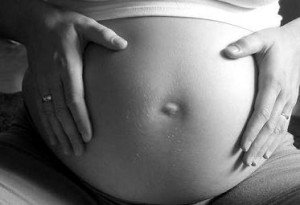A recent report on maternal and perinatal deaths has raised some tough questions about maternal care in New Zealand.
 The Perinatal and Maternal Mortality Review Committee (PMMRC) released a report this week which examines the state of New Zealand’s care of expecting and new mothers.
The Perinatal and Maternal Mortality Review Committee (PMMRC) released a report this week which examines the state of New Zealand’s care of expecting and new mothers.
The PMMRC reviews maternal deaths and all deaths of infants from 20 weeks gestation to 28 completed days after birth, or weighing at least 400g if gestation is unknown.
The committee also advises the Health Quality & Safety Commission on how to reduce the number of deaths of babies and mothers in New Zealand, and in their latest report that included figures of avoidable deaths.
“For the first time we are reporting that a number of perinatal deaths were potentially avoidable,” said PMMRC Chair, Professor Cynthia Farquhar. “Of all perinatal deaths 14 percent were thought to be potentially avoidable. That amounts to 98 lives that could have potentially been saved”.
The report covered all maternal and perinatal deaths in New Zealand in 2009 and made several recommendations to the commission for improving perinatal care, including: establishment of a national working group to address issues in providing care, improved identification of mothers at risk of perinatal complications, intial mental health assessments for expecting mothers and better obstetric emergency training for health workers.
The full report is available here, and the key findings are summarised at the bottom of this post.
The reports findings, in paticular the ‘avoidable deaths’ statistic, have been widely reported and the government has responded to concerns raised in the media.
Media coverage of the report includes:
Waikato Times: Birth statistics in Waikato ‘alarming’
New Zealand Herald: 100 babies died needlessly – report
Dominion Post: Babies could have been saved
New Zealand Herald: Maori suffer more stillbirths, neonatal deaths – reports
Waatea News: High level of Maori natal deaths
TV3 News: New report highlights childbirth difficulties
Otago Daily Times: Babies died needlessly- report
TVNZ News: Nearly 100 baby deaths potentially avoidable
Response:
Radio New Zealand: Govt working to address gaps in maternity services
Dominion Post: Learning from babies’ deaths ‘will save lives’
TV3 News: Pregnant women need to visit doctor earlier – expert
NewsTalk ZB: Maternity services group slams report
KEY FINDINGS
Perinatal and Maternal Mortality Review Committee
- In 2009 the perinatal related mortality rate was 11.3 per 1000 births. The small increase in rate across the three years has been noted but is not statistically significant. The rate is comparable to rates in Australia in 2008 and the United Kingdom in 2009.
- The stillbirth rate in 2009 was 6.3 per 1000 births. One quarter of stillbirths continue to be unexplained, and half of these occur at term.
- Maori and Pacific mothers are more likely to have stillbirths and neonatal deaths compared with New Zealand European and non-Indian Asian mothers.
- There is a significantly increased rate of stillbirth and neonatal death among mothers in the most deprived socioeconomic quintile compared with all less deprived quintiles.
- There are differences in perinatal-related mortality rates across regions of residence in keeping with differences in the sociodemographic characteristics of the mothers who live there.
- Teenage mothers (under 20 years of age) are at higher risk of stillbirth and neonatal death compared with mothers aged 20 to 30 years (14.7 per 1000 compared with 10.3 per 1000).
- Mothers of 40 years and older are at increased risk of fetal loss.
- 50 percent of teenage mothers whose babies died from 2007 to 2009 were Maori, 50 percent of teenage mothers were in the highest deprivation quintile, and 45 percent of all teen
- mothers whose babies died were smokers.
- 14 percent of all perinatal deaths were thought to be potentially avoidable.
- The maternal mortality rate in 2009 was 22 per 100,000 maternities. The higher rate can be partly attributed to four H1N1 pandemic maternal deaths in that year.
- The most frequent causes of maternal death in New Zealand in the years 2006 to 2009 were suicide, pre-existing medical conditions, and amniotic fluid embolism.
The full report is available on the Health Quality & Safety Commission’s website, www.hqsc.govt.nz.